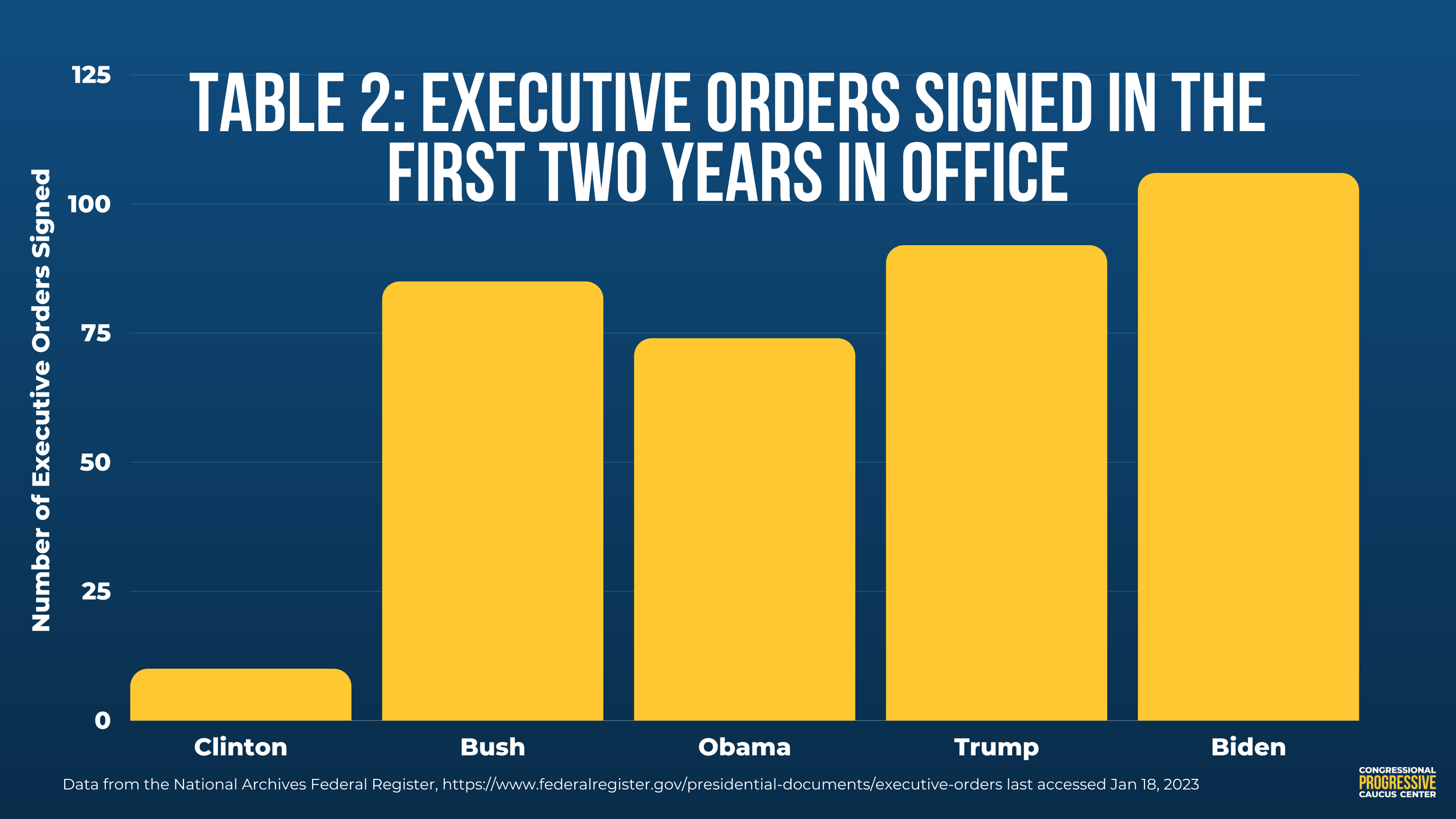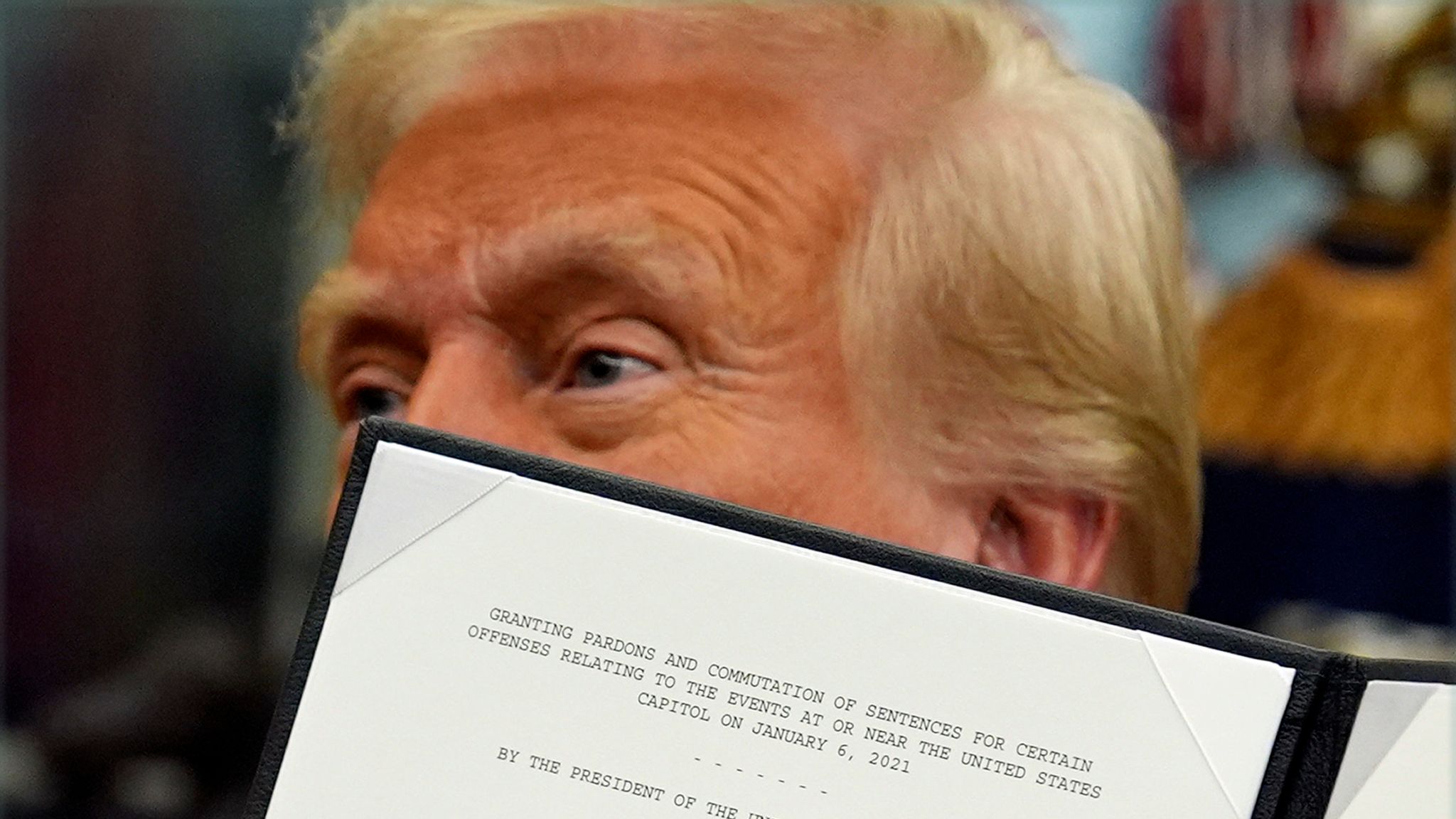10 Executive Orders That Shaped Modern Governance
When it comes to executive orders, we're diving deep into one of the most powerful tools in the arsenal of any U.S. president. These orders are like the presidential version of a "get things done" button, allowing leaders to take swift action without waiting for Congress to move at their own pace. But what exactly are these executive orders, and why do they matter so much? Stick around, because we're about to break it all down for ya.
Now, imagine this: you're the boss of the nation, and you've got big ideas to implement. But Congress? Yeah, they can be kinda slow sometimes. Enter executive orders—a way for presidents to flex their authority and make things happen without needing approval from every corner of the government. It's like having a personal "yes" button when the stakes are high.
But hold up, not everything about executive orders is sunshine and rainbows. They’ve sparked debates, controversies, and even legal challenges over the years. So, if you’re curious about how these orders shape policy, influence history, and affect everyday lives, you’re in the right place. Let’s dive in!
- Andrew Stewart Wife The Inside Story You Need To Know
- Jaden Smith Diddy Video The Untold Story Behind The Hype
What Are Executive Orders Anyway?
Executive orders are official directives issued by the President of the United States. They’re like the president’s way of saying, "Hey, here’s what I want done, and I’m making it happen now." Think of them as legal instructions that carry the weight of federal law but don’t require Congressional approval. Pretty powerful, right?
These orders have been around since the early days of the republic, with George Washington himself issuing the first one back in 1789. Since then, every president has used them to varying degrees, depending on the political climate and their leadership style. Some have used them sparingly, while others have gone all-in, stacking up hundreds of orders during their terms.
But here's the thing: executive orders aren’t unlimited. They need to align with the president’s constitutional powers, and they can be challenged in court or even overturned by future administrations. So yeah, they’re mighty, but not invincible.
- Truepeoplesearch Free The Ultimate Guide To Finding People Online
- How Old Is Ally Love Discover The Age And Journey Of A Rising Star
How Do Executive Orders Work?
Let’s break it down step by step. First, the president identifies an issue they want to address. Then, they draft the order, often with input from legal advisors and department heads. Once finalized, the order is signed and published in the Federal Register, where it becomes official.
Now, here’s the kicker: while executive orders bypass Congress, they still need to operate within the boundaries of the Constitution. If an order oversteps those limits, it can be struck down by the judiciary. It’s a delicate balance of power that keeps the system in check.
And let’s not forget, executive orders aren’t just for presidents. State governors and even corporate leaders use similar mechanisms to implement policies quickly. But for the sake of this article, we’re sticking to the big leagues—the White House.
The Top 10 Executive Orders in History
Alright, folks, let’s get to the meat of the matter. Here’s a list of the top 10 executive orders that have left a lasting impact on U.S. governance, policy, and society. We’ll explore each one, its significance, and why it still matters today.
1. Emancipation Proclamation
Issued by Abraham Lincoln in 1863, this order declared the freedom of enslaved people in Confederate states. It didn’t end slavery outright but paved the way for the 13th Amendment. This was a game-changer for civil rights and remains one of the most iconic executive orders in history.
2. Executive Order 9066
Franklin D. Roosevelt signed this order in 1942, authorizing the internment of Japanese Americans during World War II. It’s a dark chapter in U.S. history, showing how executive orders can sometimes lead to questionable decisions under the guise of national security.
3. Desegregation of the Armed Forces
Harry Truman’s Executive Order 9981 in 1948 ended racial segregation in the U.S. military. This move was a significant step toward racial equality and set the stage for broader civil rights reforms.
4. Establishing the Peace Corps
John F. Kennedy created the Peace Corps in 1961 through Executive Order 10924. This program has sent thousands of volunteers around the world to promote peace and friendship, leaving a positive legacy globally.
5. Equal Employment Opportunity
LBJ’s Executive Order 11246 in 1965 mandated equal employment opportunities in federal jobs and contracts. It was a landmark move toward ending workplace discrimination based on race, religion, or national origin.
6. Environmental Protection
Richard Nixon established the Environmental Protection Agency (EPA) via Executive Order 11514 in 1970. This move laid the foundation for modern environmental policies in the U.S.
7. Ending Discrimination Against LGBTQ+ Individuals
Barack Obama’s Executive Order 13672 in 2014 prohibited discrimination against LGBTQ+ individuals in federal employment. It marked a significant victory for LGBTQ+ rights and set a precedent for future policies.
8. Deferred Action for Childhood Arrivals (DACA)
Another Obama order, DACA in 2012 allowed undocumented immigrants brought to the U.S. as children to remain in the country without fear of deportation. It sparked intense debate but offered hope to thousands of young people.
9. Travel Ban
Donald Trump’s controversial Executive Order 13769 in 2017 restricted travel from several predominantly Muslim countries. It sparked massive protests and legal battles, highlighting the contentious nature of some executive orders.
10. Rejoining the Paris Climate Agreement
Joe Biden’s first day in office saw him rejoining the Paris Climate Agreement through an executive order. This move underscored his commitment to tackling climate change and reengaging with global partners.
Why Do Executive Orders Matter?
Executive orders matter because they allow presidents to act swiftly on pressing issues without waiting for Congress to pass legislation. In times of crisis or urgency, this can be a lifesaver. However, they also come with risks.
Some argue that executive orders undermine the principle of checks and balances, giving too much power to the executive branch. Others see them as a necessary tool for progress, especially when Congress is gridlocked. The truth, as usual, lies somewhere in the middle.
What’s clear is that executive orders have played a pivotal role in shaping U.S. history, influencing everything from civil rights to environmental policy to foreign relations. They’re a double-edged sword, offering both opportunities and challenges.
Pros and Cons of Executive Orders
- Pros: Swift action, bypassing legislative delays, addressing urgent issues.
- Cons: Potential overreach, lack of Congressional input, vulnerability to legal challenges.
It’s a delicate dance between efficiency and accountability, and each president has to navigate it carefully.
The Future of Executive Orders
As the political landscape continues to evolve, so too will the use of executive orders. With increasing polarization in Congress, future presidents may rely even more heavily on these directives to push their agendas forward.
But here’s the thing: the effectiveness of executive orders depends on their alignment with public opinion and the broader political climate. If an order feels too extreme or out of touch, it risks backlash from both the public and the courts.
Looking ahead, we might see more creative uses of executive orders, especially in areas like climate change, healthcare, and technology. The key will be striking the right balance between action and collaboration.
How Can You Stay Informed?
Staying informed about executive orders is easier than ever. Follow reputable news sources, government websites, and legal experts to keep tabs on the latest developments. Remember, these orders can have real-world impacts on your life, so it’s worth paying attention.
And hey, if you’ve got thoughts or questions about executive orders, drop them in the comments below. We’d love to hear what you think!
Conclusion
Executive orders are a vital part of the U.S. governance system, offering presidents a powerful tool to shape policy and drive change. From ending slavery to promoting civil rights to addressing climate change, these orders have left an indelible mark on history.
But with great power comes great responsibility. As we’ve seen, executive orders can be both a force for good and a source of controversy. It’s up to each president to use them wisely, balancing the need for action with respect for the rule of law.
So, whether you’re a history buff, a policy wonk, or just someone curious about how the government works, executive orders are definitely worth your attention. They’re a reminder that leadership isn’t just about making speeches—it’s about taking action.
Now it’s your turn. Share this article with your friends, leave a comment, or check out some of our other posts. Together, let’s keep the conversation going!
Table of Contents
- What Are Executive Orders Anyway?
- How Do Executive Orders Work?
- The Top 10 Executive Orders in History
- Why Do Executive Orders Matter?
- Pros and Cons of Executive Orders
- The Future of Executive Orders
- How Can You Stay Informed?
- Conclusion

.png)

Detail Author:
- Name : Maymie Anderson
- Username : lavon.simonis
- Email : marisol.pfannerstill@hotmail.com
- Birthdate : 1975-11-24
- Address : 6883 Bryon Terrace Apt. 489 Mohammadshire, NC 95023-7763
- Phone : +1-478-364-3834
- Company : Stoltenberg-Zboncak
- Job : Choreographer
- Bio : Ut natus autem excepturi dolorem et atque magni. Eveniet maxime sunt impedit nostrum sint libero adipisci. Aut perspiciatis est laboriosam dolores tenetur quasi quidem.
Socials
twitter:
- url : https://twitter.com/cooperboyle
- username : cooperboyle
- bio : Perspiciatis similique repudiandae soluta quo nostrum deserunt. In error deserunt illo animi minima. Iusto quidem earum error officiis et.
- followers : 3455
- following : 11
linkedin:
- url : https://linkedin.com/in/boylec
- username : boylec
- bio : Et velit similique officiis consequatur.
- followers : 5063
- following : 2211
instagram:
- url : https://instagram.com/cooper_boyle
- username : cooper_boyle
- bio : Ullam fugiat aut consequatur esse non et quia. Provident et ipsa et voluptatibus.
- followers : 6560
- following : 629